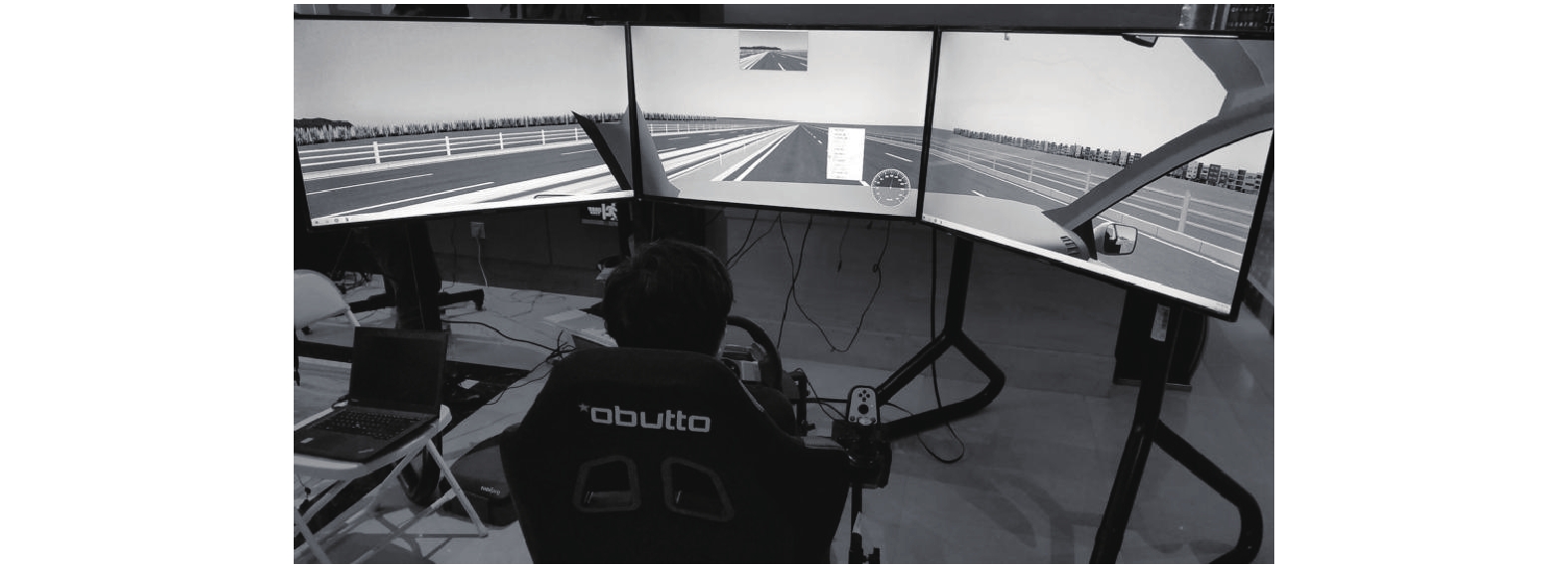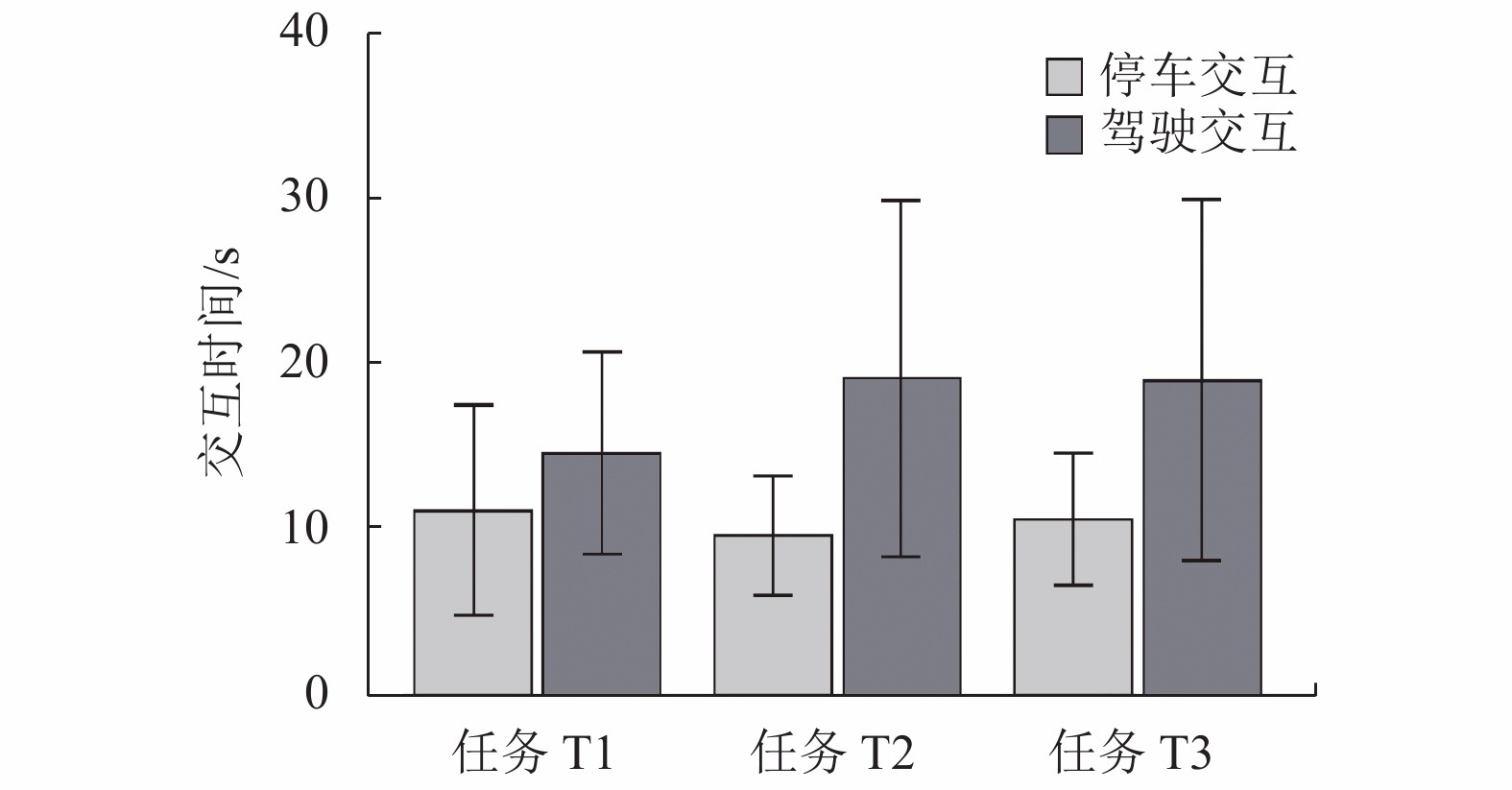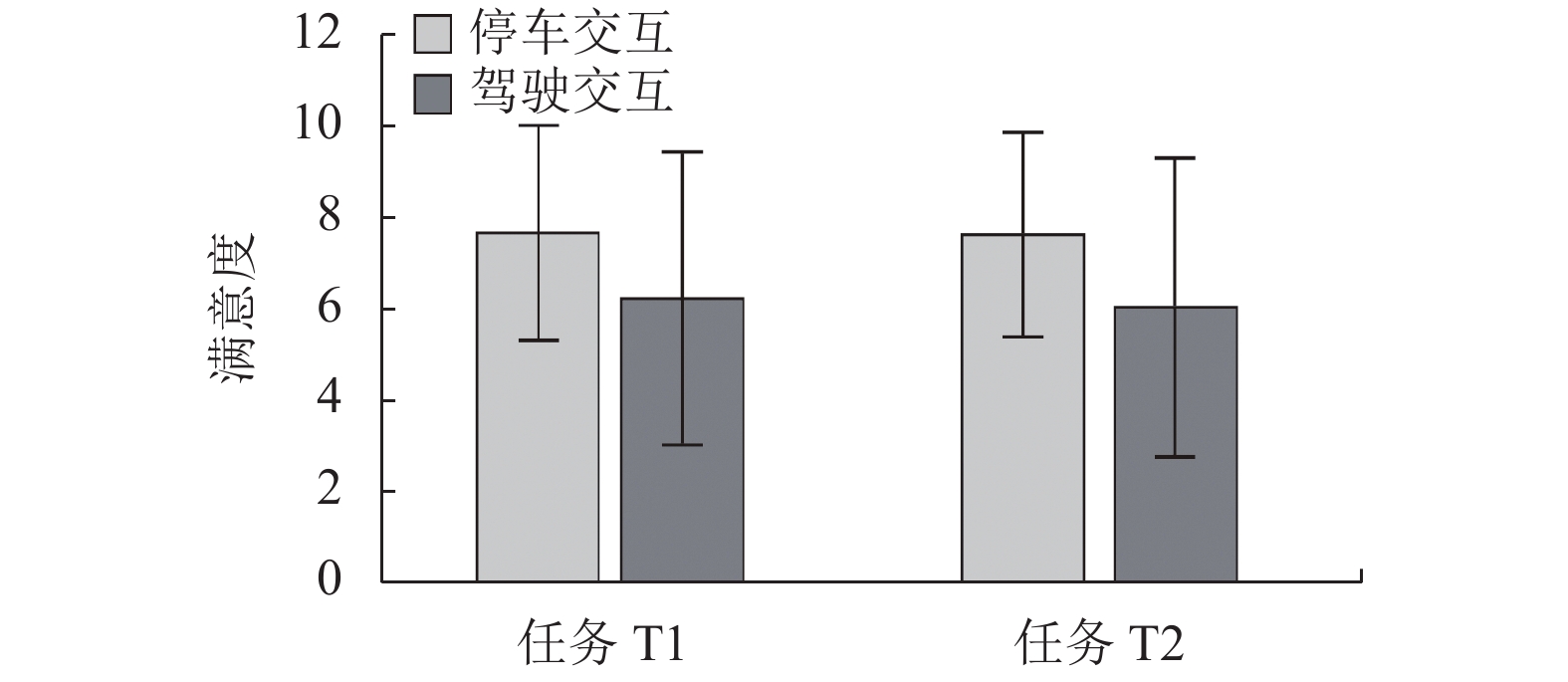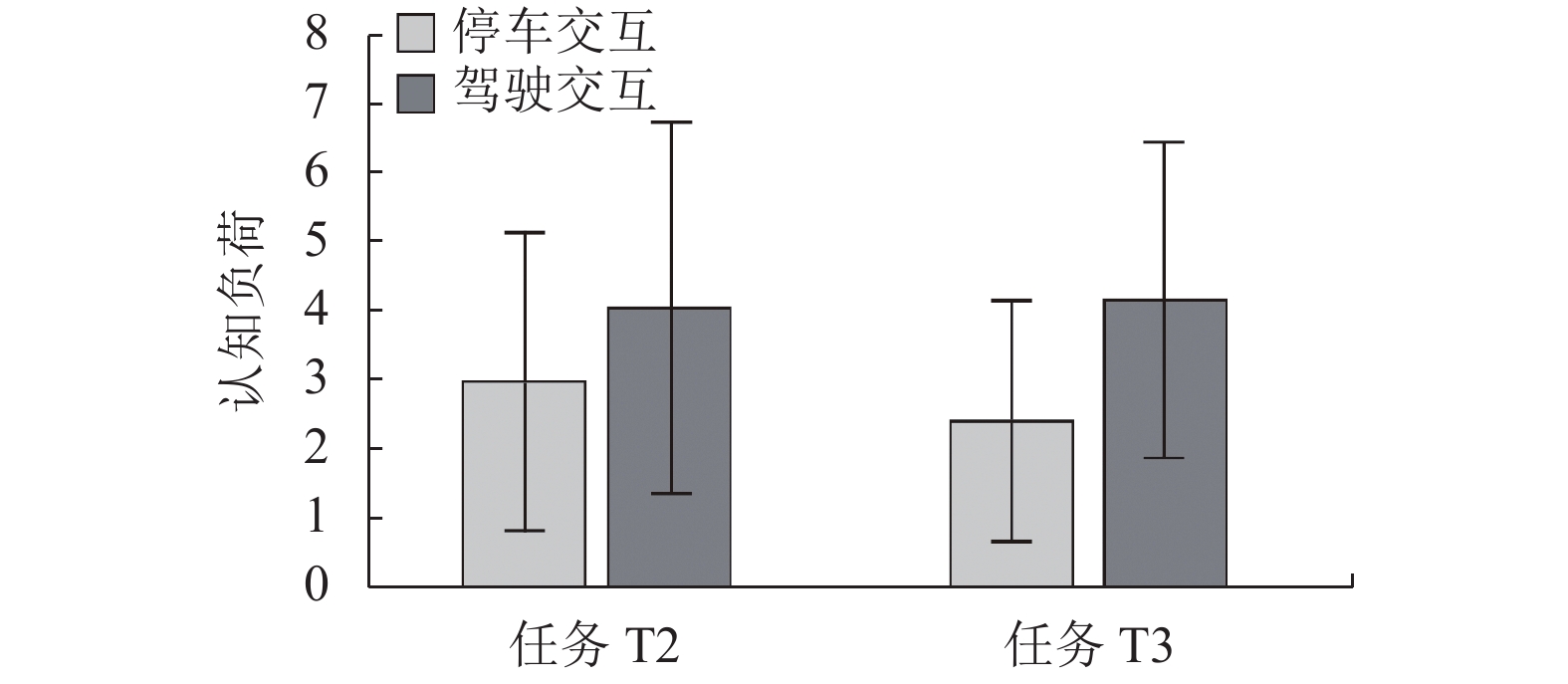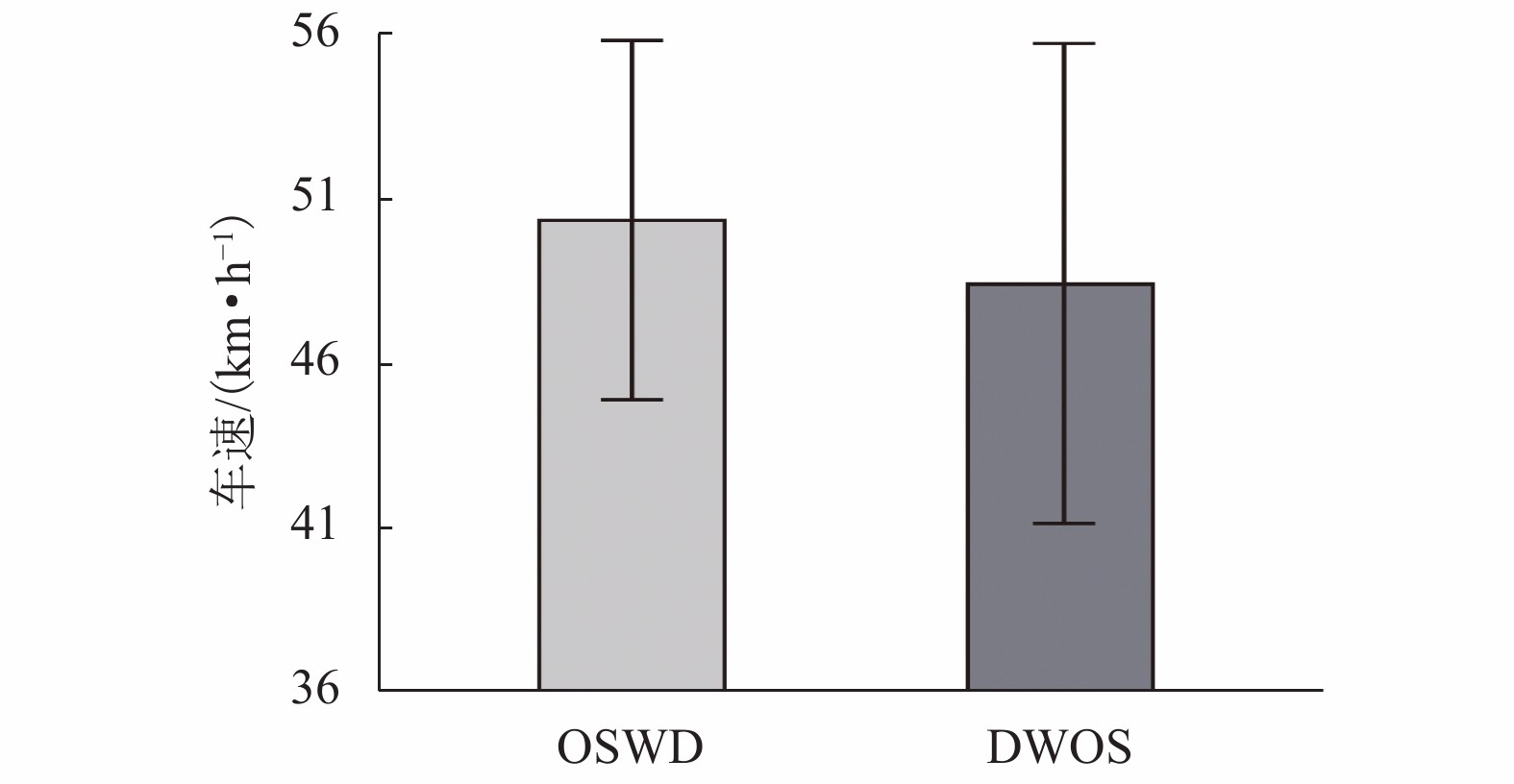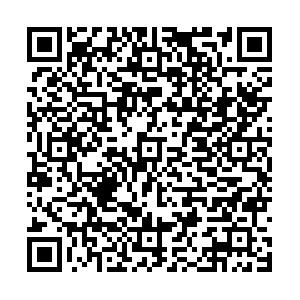Influence of Sharing Tasks on Automobile Driving Safety and Software Interactive Usability
-
摘要: 为了确定汽车共享交互任务与驾驶任务协同作用对驾驶安全性和交互可用性的影响,进而为汽车共享软件优化和汽车共享驾驶员筛选培训提供理论参考,首先针对24名经验丰富的中国驾驶员,利用汽车模拟驾驶试验,采集了车速变化、制动时间、交互时间等驾驶安全性和交互可用性参数数据,然后通过配对样本t检验方法,在停车状态和驾驶状态,对比分析了是否使用汽车共享软件对交互可用性绩效和驾驶安全性绩效的影响. 研究表明:相对于不操作共享任务,驾驶时操作汽车共享任务交互时间增加了24%~87%,满意度降低了15%,认知负荷增加了33%~61%,但交互错误不受影响;反向来看,驾驶时操作汽车共享任务会对驾驶安全性产生影响,表现为相对于不操作共享任务,制动反应时间增加了45%,方向盘调整次数增加了217%~761%,方向盘调整角度增加了25%~66%,驾驶错误增加了512%~1053%,车速降低了8%;汽车共享软件导致的驾驶分心只影响反应时间,不影响制动行为.Abstract: In order to form a theoretical base for the optimization of car sharing software and drivers’ selection, how automobile sharing tasks and driving task affect driving safety and interactive usability is explored. Firstly, 24 experienced Chinese drivers were recruited for driving simulation tests, and driving safety and usability data such as speed, braking time, and interaction time were collected, and data were processed through paired sample t-test method. Using automobile sharing software in the scenarios of parking and driving are analyzed and compared in terms of interaction and safety performance. It is found that the operation of sharing tasks during driving can lead to the interaction time increase of 24%−87%, satisfaction decrease of 15%, and cognitive load increase of 33%−61%, but interaction errors are not affected. On the other hand, the operation of automobile sharing tasks during driving will affect driving safety, showing that in contrast to no sharing tasks, braking reaction time is increased by 45%, steering wheel adjustment times is increased by 217%−761%, adjustment angle of steering wheel is increased by 25%−66%, driving error is increased by 512%−1053%, and speed is decreased by 8%. However, driving distraction caused by automobile sharing software only affects reaction time rather than braking behavior.
-
Key words:
- sharing task /
- automobile driver /
- human-computer interaction /
- driving safety /
- usability
-
表 1 方向盘调整次数
Table 1. Times of adjusting steering wheel
次 状态 任务 T1 任务 T2 任务 T3 DWOS 0.460 ± 1.100 0.460 ± 1.100 0.460 ± 1.100 OSWD 1.458 ± 1.865 2.670 ± 2.240 3.960 ± 4.630 表 2 驾驶错误
Table 2. Driving errors
次 状态 任务 T1 任务 T2 任务 T3 DWOS 0.17 ± 0.38 0.17 ± 0.38 0.17 ± 0.38 OSWD 1.04 ± 0.95 1.37 ± 1.24 1.96 ± 1.88 -
SHABBER H, BANU W. Mobile phone accidents-experience of India[J]. Transport and Telecommunication, 2012, 13(3): 193-208. doi: 10.2478/v10244-012-0016-6 SULLMAN M J, PRAT F, TASCI D K. A roadside study of observable driver distractions[J]. Traffic Injury Prevention, 2015, 16(6): 552-557. doi: 10.1080/15389588.2014.989319 PRAT F, PLANES M, GRAS M E, et al. An observational study of driving distractions on urban roads in Spain[J]. Accident Analysis & Prevention, 2015, 74: 8-16. RUMSCHLAG G, PALUMBO T, MARTIN A, et al. The effects of texting on driving performance in a driving simulator:the influence of driver age[J]. Accident Analysis & Prevention, 2015, 74: 145-149. CHOUDHARY P, VELAGA N R. Modelling driver distraction effects due to mobile phone use on reaction time[J]. Transportation Research Part C:Emerging Technologies, 2017, 77(4): 351-365. HE J, CHAPARRO A, NGUYEN B, et al. Texting while driving: is speech-based text entry less risky than handheld text entry?[C]//The 5th International Conference on Automotive User Interfaces & Interactive Vehicular Applications. New York: Association for Computing Machinery, 2013: 124-130. ARMIN E, JOHANNES K. Between laboratory and simulator:a cognitive approach to evaluating cockpit interfaces by manipulating informatory context[J]. Cognition,Technology & Work, 2014, 16(3): 417-427. SHI C, LIU Y. Concurrent processing of vehicle lane keeping and speech comprehension tasks[J]. Accident Analysis Prevention, 2013, 59(10): 46-54. BECIC E, DELL G S, BOCK K, et al. Driving impairs talking[J]. Psychonomic Bulletin & Review, 2010, 17(1): 15-21. ALOSCO M L, GUNSTAD J. Both texting and eating are associated with impaired simulated driving performance[J]. Traffic Injury Prevention, 2012, 13(5): 468-475. doi: 10.1080/15389588.2012.676697 HAGUE M, MAZHARU O, OSCAR K, et al. Understanding the impacts of mobile phone distraction on driving performance:a systematic review[J]. Transportation Research Part C:Emerging Technologies, 2016, 72: 360-380. KIM H, SONG H. Evaluation of the safety and usability of touch gestures in operating in-vehicle information systems with visual occlusion[J]. Applied Ergonomics, 2014, 45(3): 789-798. doi: 10.1016/j.apergo.2013.10.013 国家信息中心. 产能共享呈现加速发展态势——国家信息中心发布《中国共享经济发展年度报告(2019)》[J]. 财经界,2019(10): 64-65. CHOI J S, KIM H S, KANG D W, et al. The effects of disruption in attention on driving performance patterns:analysis of jerk-cost function and vehicle control data[J]. Applied Ergonomics, 2013, 44(4): 538-543. doi: 10.1016/j.apergo.2012.11.004 YOUNG K L, MITSOPOULOS-RUBENS E, RUDIN-BROWN C M, et al. The effects of using a portable music player on simulated driving performance and task-sharing strategies[J]. Applied Ergonomics, 2012, 43(4): 738-746. doi: 10.1016/j.apergo.2011.11.007 BRACE C L, YOUNG K, REGIN M. Analysis of the literature:the use of mobile phones while driving[J]. Analysis, 2007, 37: 261-265. ENGSTROEM J, AUST M L, VISTROEM M. Effects of working memory load and repeated scenario exposure on emergency braking performance[J]. Human Factors, 2010, 52(5): 551-559. doi: 10.1177/0018720810381072 STRAYER D L, DREWS F A. Profiles in driver distraction:effects of cell phone conversations on younger and older drivers[J]. Human Factors, 2004, 46(4): 640-649. doi: 10.1518/hfes.46.4.640.56806 HARBLUK J, NOY Y, TRBOVICH P, et al. An on-road assessment of cognitive distraction:impacts on drivers’ visual behavior and braking performance[J]. Accident Analysis and Prevention, 2007, 39(2): 372-379. doi: 10.1016/j.aap.2006.08.013 MEHLER B, REIMER B, COUGHLIN J F. Sensitivity of physiological measures for detecting systematic variations in cognitive demand from a working memory task:an on-road study across three age groups[J]. Human Factors, 2012, 54(3): 396-412. doi: 10.1177/0018720812442086 REIMER B, DONMEZ B, LAVALLIERE M, et al. Impact of age and cognitive demand on lane choice and changing under actual highway conditions[J]. Accident Analysis and Prevention, 2013, 52: 125-132. REIMER B, MEHLER B, WANG Y, et al. A field study on the impact of variations in short term memory demands on drivers’ visual attention and driving performance across three age groups[J]. Human Factors, 2012, 54(3): 454-468. doi: 10.1177/0018720812437274 TRACTINSKY N, RAM E S, SHINAR D. To call or not to call:that is the question (while driving)[J]. Accident Analysis and Prevention, 2013, 56(4): 59-70. LIU Y C, OU Y K. Effects of age and the use of hands-free cellular phones on driving behavior and task performance[J]. Traffic Injury Prevention, 2011, 12(6): 550-558. doi: 10.1080/15389588.2011.607197 HAQUE M, WASHINGTON S. The impact of mobile phone distraction on the braking behaviour of young drivers:a hazard-based duration model[J]. Transportation Research Part C:Emerging Technologies, 2015, 50(1): 13-27. HAQUE M, WASHINGTON S. A parametric duration model of the reaction times of drivers distracted by mobile phone conversations[J]. Accident Analysis and Prevention, 2014, 62(1): 42-53. CAIRD J K, JOHNSTON K A, WilLNESS C R, et al. A meta-analysis of the effects of texting on driving[J]. Accident Analysis and Prevention, 2014, 71(10): 311-318. MARQUEZ L, CANTILLO V, ARELLANA J. Mobile phone use while driving:a hybrid modeling approach[J]. Accident Analysis and Prevention, 2015, 78(5): 73-80. BERG W P, DESSECKER D J. Evidence of unconscious motor adaptation to cognitive and auditory distraction[J]. Adaptive Behavior, 2013, 21(5): 346-355. doi: 10.1177/1059712313491613 LARRY B, NABATILAN. Effect of driving experience on visual behavior and driving performance under different driving conditions[J]. Cognition,Technology & Work, 2012, 14(4): 355-363. 景春晖,支锦亦,杨随先,等. 车内手机交互对驾驶安全性的影响[J]. 包装工程,2019,40(16): 32-36. SVENSON O, PATTEN C J D. Mobile phones and driving: a review of contemporary research[J]. Cognition Technology & Work, 2005, 7(3): 182-197. HARRISON R, FLOOD D, DUCE D. Usability of mobile applications:literature review and rationale for a new usability model[J]. Journal of Interaction Science, 2013, 54: 44-51. 谭浩,孙家豪,关岱松,等. 智能汽车人机交互发展趋势研究[J]. 包装工程,2019,40(20): 32-42. ORPHANIDES A K, NAM C S. Touchscreen interfaces in context:a systematic review of research into touchscreens across settings,populations,and implementations[J]. Applied Ergonomics, 2017, 61: 116-143. doi: 10.1016/j.apergo.2017.01.013 CHOUDHARY P, VELAGA N R. Analysis of vehicle-based lateral performance measures during distracted driving due to phone use[J]. Transportation Research Part F:Traffic Psychology and Behaviour, 2017, 44: 120-133. doi: 10.1016/j.trf.2016.11.002 NAKANO I, COFFEY B. Vertical-horizontal differences in visual space recognition of Americans and Japanese:2:00 pm (bv-305)[J]. Optometry and Vision Science, 1994, 71(S1): 71-77. LI R, CHEN Y, SHA C, et al. Effects of interface layout on the usability of In-Vehicle Information Systems and driving safety[J]. Displays, 2017, 49(9): 124-132. HART S G, STATELAND L E. Development of NASA-TLX (task load index):results of empirical and theoretical research[J]. Advances in Psychology, 1988, 52(6): 139-183. LUND A M. Measuring usability with the USE questionnaire[J]. Usability Interface, 2001, 8(2): 3-6. RADLE R, HANS-CHRISTIAN M, JENS R. Bigger is not always better: display size, performance, and task load during peephole map navigation[C]//Proceedings of the SIGCHI Conference on Human Factors in Computing Systems. New York: Association for Computing Machinery, 2014: 4128-4136. -






 下载:
下载:
